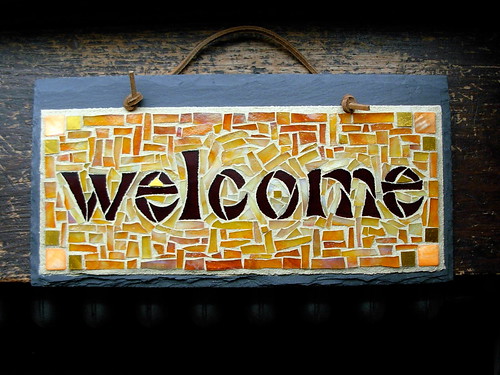My mother was a yeller. Yep, I grew up knowing that if I messed up she would yell. Or if she was upset, she would yell. I learned to read her pretty well, but sometimes I couldn’t predict what would set her off. Not so much fun as a kid. So when I became a parent, I swore I would never yell, never ever repeat that pattern! Oh, no not me. Weren’t the memories clear enough? The hurt, the feeling of helplessness and disconnect from my mother. And then my child grew into a toddler and I got tired, very very tired.
Suddenly, I found myself yelling. Snap, out came the harsh tone, the raised volume and the frustration. My child shrank in front of me, physically bending as though the words were weighing on her. And she began to cry. I stopped, stunned. Who was this person? Where did the yelling mom come from? I scooped up my daughter and soothed her, apologizing again and again.
I took this as a big sign that I needed to really look at my stress level. I spent several days contemplating my yelling self and realized that I had internalized yelling as a response to stress, tiredness, and frustration. Even though, being yelled at was such a terrible experience for me, I still had the response in me.
Oh boy, talk about a painful growth experience. And I realized I needed to take better care of myself, yep, the old advice, love yourself. I realized I was so focused on nurturing everyone around me that I had forgotten that I needed some care. . . and sleep. And yes, some help with the dishes would be nice.
I talked with my daughter and told her I don’t like to yell and that I will do better next time. I told her sometimes I get tired and feel grouchy. We talked about what we can do when we are feeling grouchy. She suggested giving each other a hug. I agreed this was a great idea. I told her that I would tell her when I started to feel frustrated and that I hoped she would tell me too. This all felt great. Our home returned to the happy, positive place it had always been.
But you know, it’s not usually that easy to fix something this deep. And so my tone started to get an edge every once in awhile. I was quick to stop and change course. But it was still there. “It sounds like you are yelling,” said my daughter. Reminding me that I had told her I was not going to yell. “Yes, you are right,” I said and recommitted to doing better.
And then one day my daughter now six, got very upset with her little sister and . . . yes, started yelling at her with the same tone and much of the same language that I use. And that is when something in me snapped. I was successfully recreating the pattern. I was yelled at and I yelled, she was yelled at, and she was yelling. This was my moment of truth. I thought that other moment was it but unfortunately not.
So what did I do? I asked my older daughter why she was so upset and found out her sister had hit her. I reminded my little one that hitting hurts. In a loving calm voice talked to my six year old about yelling and how it feels. I reminded her that her sister is learning from us. I asked her how she wants to be spoken to. And then she said to her sister, “Let’s have a pinkie promise, no more hitting and no more yelling.” They linked pinkies and promised. I quietly fought back tears. Maybe the pattern wasn’t going to repeat after all.
Nowadays, I hold myself to the pinkie promise. When I start to feel tired and grouchy I announce in a fake serious voice, “I’m getting grumpy,” and my daughter smiles and usually gives me a hug.

